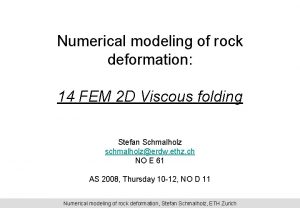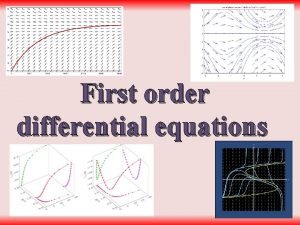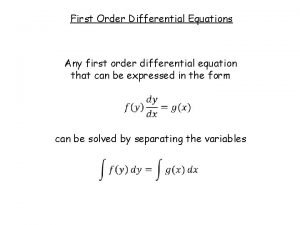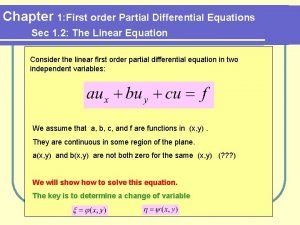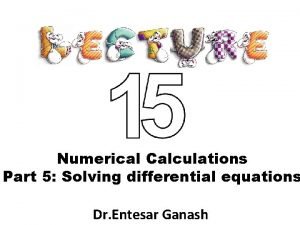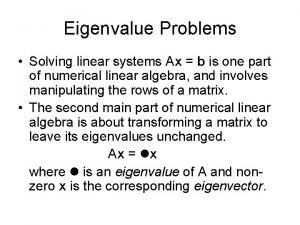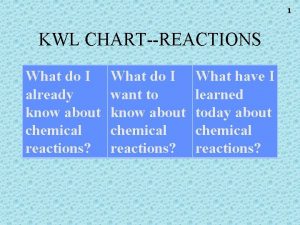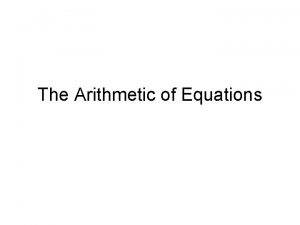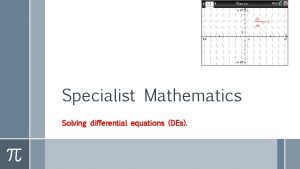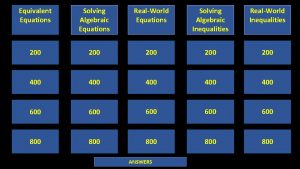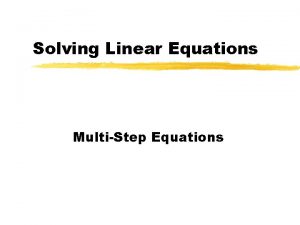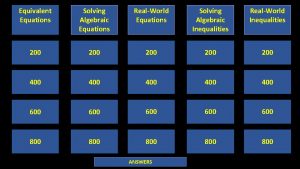Numerical Calculations Part 5 Solving differential equations Dr









- Slides: 9

Numerical Calculations Part 5: Solving differential equations Dr. Entesar Ganash

First order differential equation The general first order differential equation is Initial condition Is given Example:

Rung-Kutta fourth-order formulae There a variety of alogorithms, under the general name of Runge-Kutta. This can be used to integrate systems of ordinary differential equations First, Let us see this http: //www. youtube. com/watch? v=k. Ucc 8 v. Ago. Q 0 In the first order differential equation: The fourth- order Runge-Kutta estimate where at is given by

Second order differential equation The general second order differential equation is Initial conditions are given Example:

Rung-Kutta fourth-order formulae In the second order, we have where

Example Write a program to solve the following differential equation. when use n=30 Solving program RKM implicit none integer: : n, i ! No of parts, counter real : : y, dy, x, xn, h, exact real : : k 1, k 2, k 3, k 4 n=30 x=0. 0 y=0. 0 dy=1. 0 xn=1. 0 h=(xn-x)/n Exact=sin(x) print*, '---------------------------------' print*, ' x', ' y', ' dy', ' Exact' print*, '---------------------------------' print*, x, y, dy, Exact in

DO I=1, n k 1=h*f (x, y, dy) k 2=h*f(x+h/2, y+h*dy/2+h*k 1/8, dy+k 1/2) k 3=h*f(x+h/2, y+h*dy/2+h*k 1/8, dy+k 2/2) k 4=h*f(x+h, y+h*dy+h*k 3/2, dy+k 3) x=x+h Exact=sin(x) y=y+h*(dy+(k 1+k 2+k 3)/6) dy=dy+(k 1+2. 0*k 2+2. 0*k 3+k 4)/6 print*, x, y, dy, exact End do print*, '---------------------------------' CONTAINS REAL Function f(p, q, u) Real : : f, p, q, u f=-q End function f End program RKM continue Solving

The result:

References • Hahn, B. D. , 1994, Fortran 90 For Scientists and Engineers, Elsevier http: //www. stewartcalculus. com/data/CALCULUS%20 Concepts%20 and%20 Co ntexts/upfiles/3 c 3 -Apps. Of 2 nd. Orders_Stu. pdf
 Numerical methods for partial differential equations eth
Numerical methods for partial differential equations eth Cauchy equation
Cauchy equation Solving 1st order differential equations
Solving 1st order differential equations First order ode
First order ode Pde first order
Pde first order Numerical calculations
Numerical calculations Structural steel connection calculations calculations
Structural steel connection calculations calculations Eigen value problem
Eigen value problem Chemical formula kwl chart
Chemical formula kwl chart Calculations using balanced equations are called
Calculations using balanced equations are called
